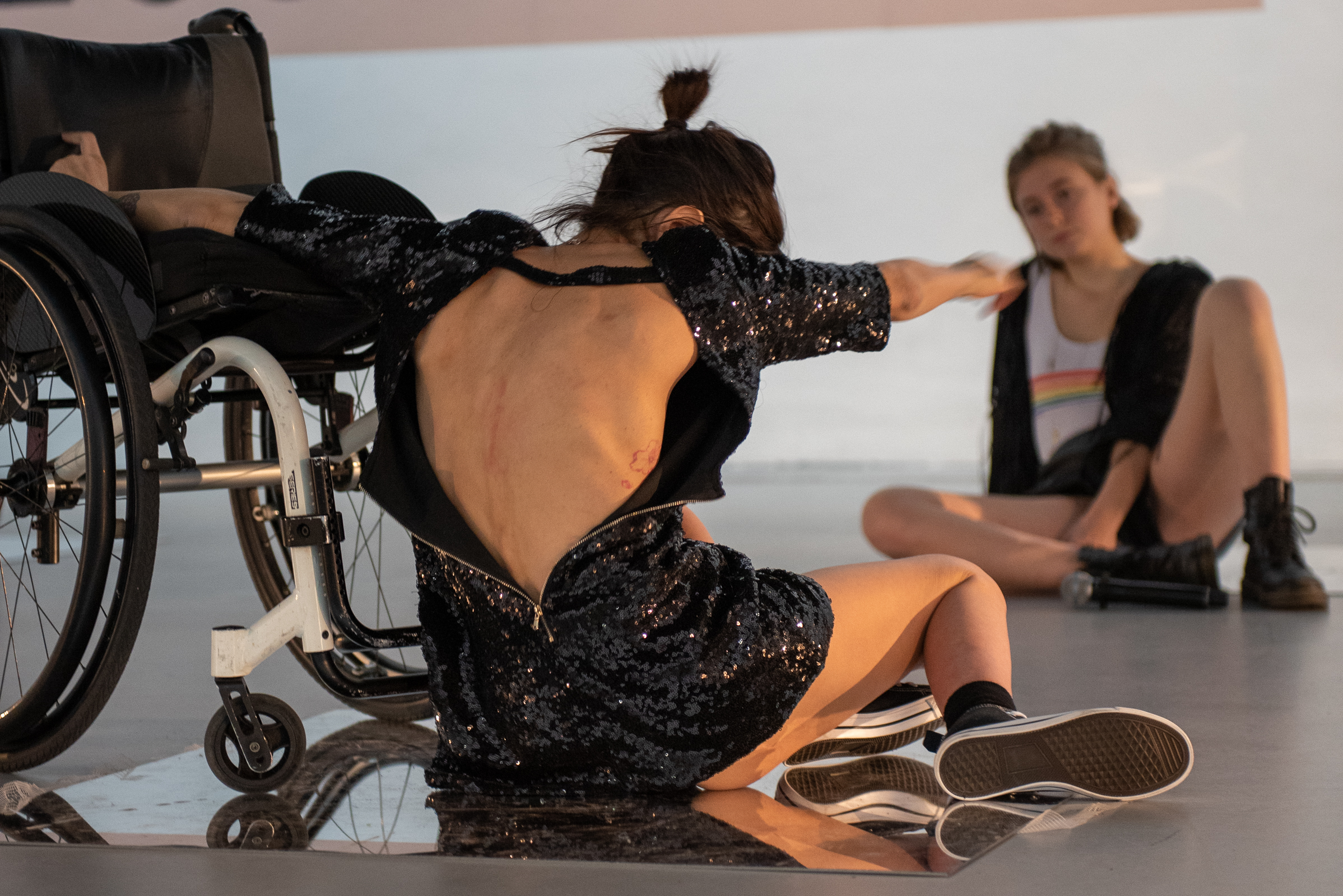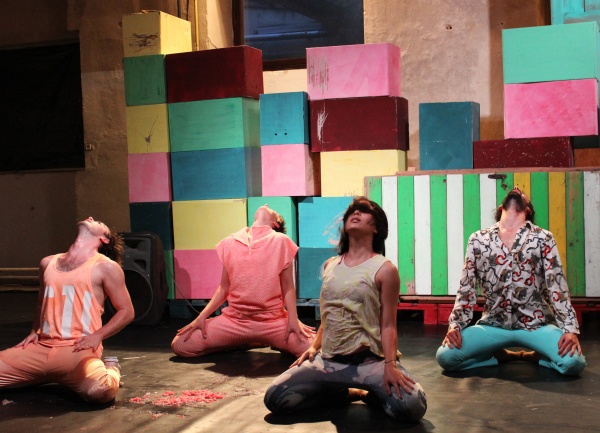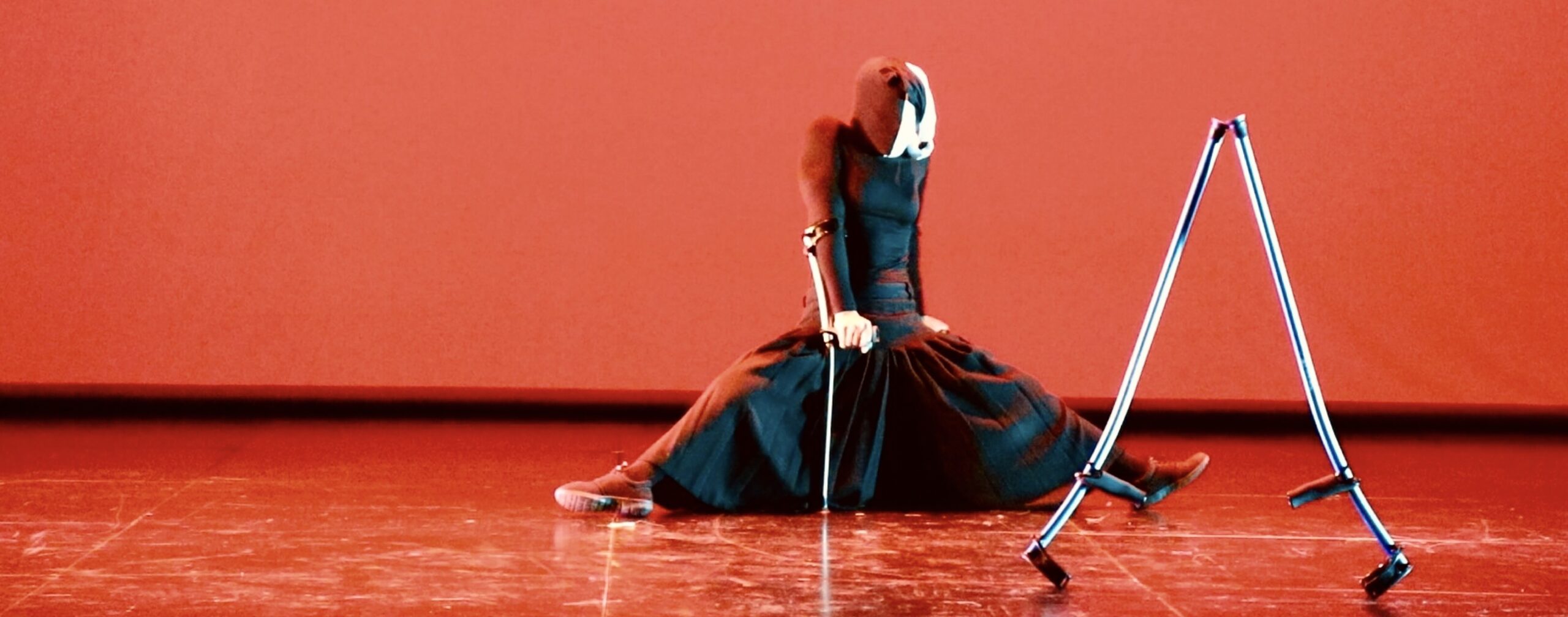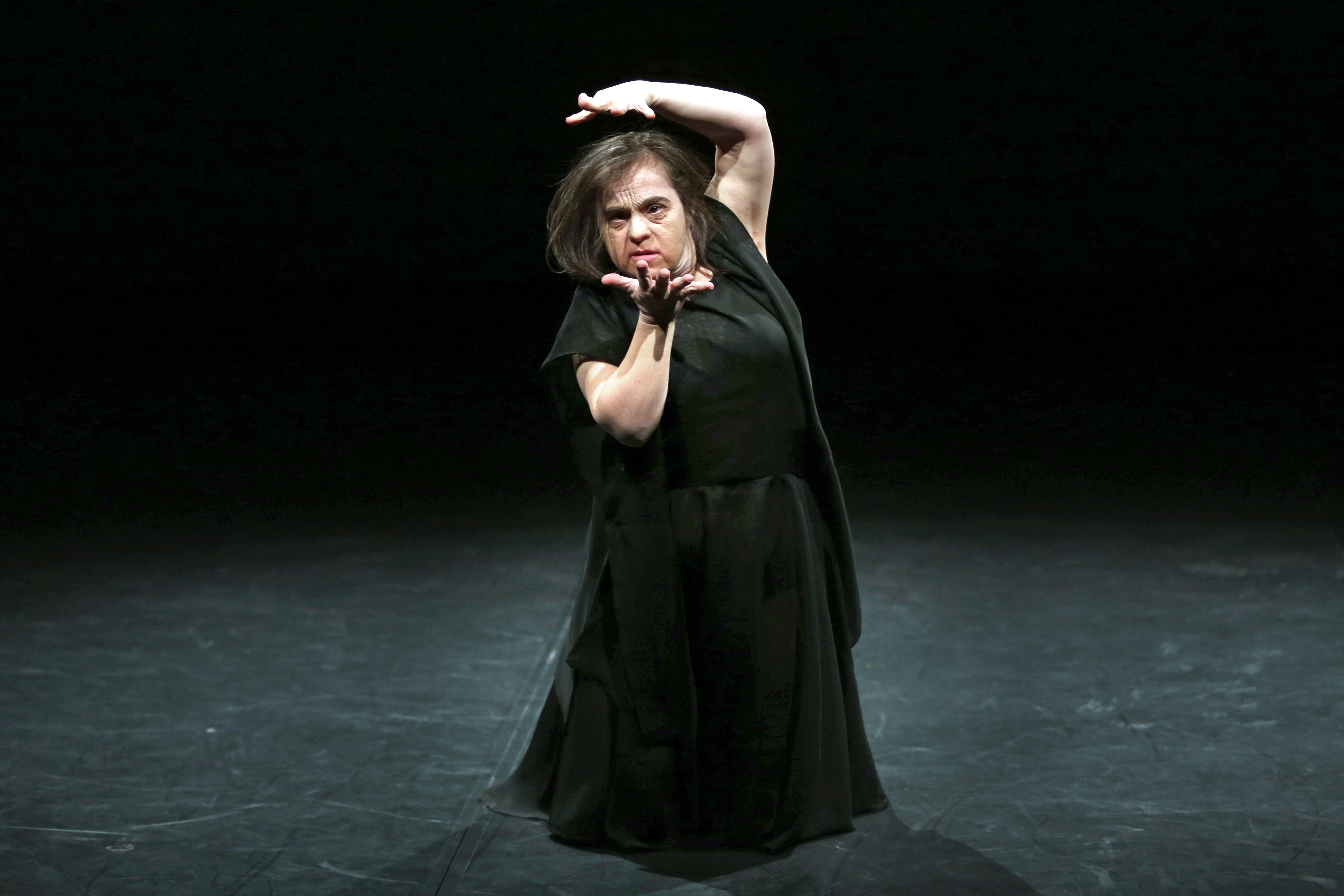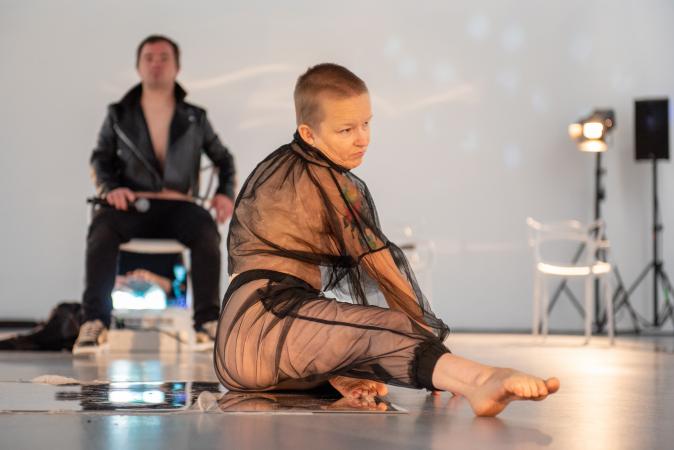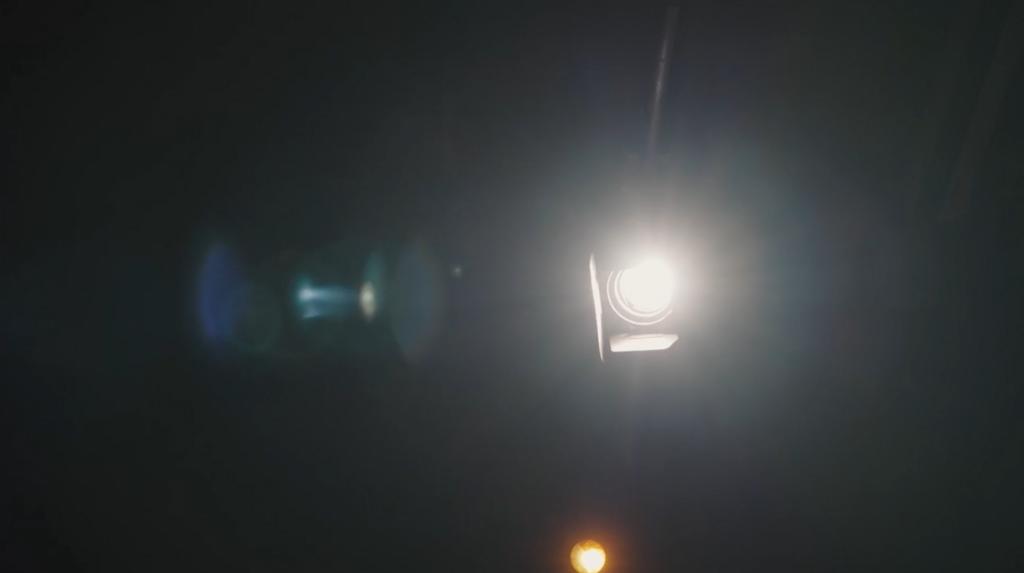
Producers and Promoters
Welcome to this Europe Beyond Access “Learning Journey” aimed at producers, promoters and programmers in the performing arts.
We know from our own research there are thousands of cultural professionals who express a desire to make their programmes more accessible to Deaf and disabled artists and audiences, and to know more about the works made by those artists. But we also know that many professionals don’t know where to find this information.
We hope this is a useful place to start.
Topics include the logistics of organising events that are accessible to Deaf and disabled artists, but, further than this, information about how different venues, festivals and companies are challenging themselves to become more accessible cultural organisations.
We explore great examples of Audience Development – not only extending access to performances themselves, but building relationships of trust with audiences and communities long-marginalised from the mainstream cultural sector.
We also share some of the artistic practices of the artists we have worked with through Europe Beyond Access, as we believe the art and the artists must be at the heart of all our work as cultural organisations.
Here you will find brand new information made specifically for this toolkit. However, many of the resources we highlight here have been developed by other, more specialist and more experienced organisations than the partners of Europe Beyond Access. Much of this information has helped our consortium improve how we host, support and enable Deaf and disabled artists.
Our own films are hosted on YouTube to allow you to benefit from captions and the YouTube auto-translation feature. We provide links to transcripts of the films and audio files to enable you to work with Google Translate and screen readers.
Producers Learning Journey in International Sign
Curator’s Message
The partners of Europe Beyond Access (with the exception of our remarkable specialist partner, Per.Art) are all mainstream cultural organisations which have been through a very steep learning curve in the last 5 years.
Having made a commitment to commissioning, presenting, and collaborating with Deaf and disabled artists, it was our responsibility to improve our own processes and structures.
As non-specialists, we have benefitted from the experience and expertise of dozens of companies, consultants, independent artists and access providers.
In this Learning Journey we are sharing a selection of those tools and that guidance which we have found most useful. Mostly, these have been created by specialist companies which are much more expert than we are.
However, before looking at the tools and techniques for greater accessibility, we have chosen to share an insight into the artistic practice of the artists with whom we have worked. As arts organisations we must place the art and the artists at the heart of all of our conversations.
So, we share a glimpse into the artists whose work we have commissioned and supported; we give a platform to those artists to offer provocations to our mainstream cultural institutions; we share stimulating conversations about the value of the work of Deaf and disabled artists to the arts themselves; and we share conversations about the relationship between disabled artists and the mainstream cultural sector.
This Learning Journey is not a complete manual – far from it. Instead, this is our own subjective selection of tools and practices that we think may contribute to your work. We are happy to know about other tools that you have found to support you in your work, or information you may have yourself produced to support change towards an equitable cultural sector.
Ben Evans
May 2023, London
1. Start with the Art
For the partners of Europe Beyond Access the question of accesibility has been a constant theme. However, what we have discovered is that if our conversations and processes start always from thinking about access, somehow it is harder to persuade our colleagues, our audiences, and our funders to come on the journey of change with us. However, when we place the art at the heart of the conversations – works made by disabled artists which surprise, excite and move us – then somehow the rest of the journey is easier and more pleasurable.
In this film, the Serbian choreographer Dalibor Šandor talks about the process of making his work “We Are Not Monsters” with his artistic collaborator, Xavier Le Roy. Šandor chose the subject of Monsters for this dance commission in response to his experience as a tall learning disabled man in Serbia – his experience of being seen as monstrous. He locates the work in galleries, exploring images of monstrosity, and reclaiming public space for himself and other disabled people.
We are not Monsters transcript
In this filmed interview, the Swedish dancer and choreographer Madeleine Månsson talks about her process when making the work entitled Uncharted.
Interview with Madeleine Månsson about Uncharted transcript
In this film we see a glimpse of four different dance works commissioned by four different Europe Beyond Access partnered – a chance to see the breadth of work made.
Here we share a selection of profiles of some of the artists who took part in Europe Beyond Access.
2. Provocations for mainstream arts professionals
In this Chapter we share some of the provocations from Deaf and disabled artists which have had a deep impact on our organisations and our staff members during the course of Europe Beyond Access. Our experience proves that organisational change is easier when it is not the responsiblity of just one person nominated to take responsibility for better access for Deaf and disabled artitsts and audiences, but, instead, becomes the mission of the whole staff team. We hope this content might prove a talking point with your colleagues.
The Italian Association of disabled artists, Al.Di.Qua share with the world their manifesto for change – an invitation to see the world differently.
Kimberley Harvey ‘What do you see when you look at me?’ transcript
Artist and teacher Kimberley Harvey shares her personal journey as an artist, exploring identity, but also asking the viewer to reflect on their own assumptions.
In this film we hear artist and activist Tanja Erhart discuss Access not only as a tool or approach to making art accessible, but an aesthetic approach and artistic practice in itself.
Kate Marsh, ‘Who Dictates the Conditions for Artists’ transcript
In this provocation disabled artist and research Kate Marsh asks: “who dictates the conditions for artists?” “What if artists made the decisions about the conditions that we practice in? (….) If sufficient funding for access were guaranteed and in place, and we did not need to articulate our access needs in every conversation, in every application? What would this do to the work we make or might make if these things were in place and we were free to just produce and perform our work?
In this provocation, Nadja Dias, independent dance producer (currently working with Claire Cunningham) reflects on the relationship between artists and presenters, and what role arts funders have to play in overcoming barriers.
Mindy Drapsa, ‘Deaf Culture and Deaf-led Artistic Practices’ transcript
Deaf culture is a unique culture in itself. Here Mindy Drapsa explores a range of different aesthetic, artistic, political, and linguistic practices that contribute to her experience as a Deaf person and Artistic Director.
Further reading:
In an open letter published in British Council’s El Alto review of Disability Arts practice in the Americas, Brazilian artist Edu O. defines “bipedalism”, outlines the collective experience of the ageing body and calls for a disability-led paradigm shift.
Permission to Stare by Kate Marsh and Jonathan Burrows (ed.)
In this publication published by IETM – International Network for Contemporary Performing Arts, Kate Marsh and Jonathan Burrows encourage thirteen international disabled artists to author letters commencing “Dear Fellow Artist……”
3. Creative Innovation & Identity-based Practice
At the heart of Europe Beyond Access is our consortium’s belief that some of the most ground-breaking and exciting performance works are currently being made by Deaf and disabled artists. Some of the most radical and innovatory cultural practices are emanating from those who have often been ignored – who have largely developed outside of mainstream cultural education, who bring new physical vocabularies to their works, and who often challenge all traditional perceptions of contemporary performance.
These artists are not just making new works with interesting content which has never been seen before. They are challenging the art forms themselves. So much so that the acclaimed visual artist, Yinka Shonibare, describes Disability Arts as ‘The last remaining avant-garde movement’.
Lyn Gardner: Arts, Disability and the role of the Critic and Criticism transcript
In this short lecture one of the UK’s leading theatre critics, Lyn Gardner, talks about why she thinks the work of disabled artists is some of the most exciting and innovative work being made at the moment. Lyn talks not as a disabled person, but rather as a cultural commentator looking at the work of disabled artists within the wider cultural sector.
“Unexpected Bodies in Unexpected Places” was the title of this Artistic Laboratory that toook place in Malmö, Sweden. Led by Caroline Bowditch, the Laboratory explored both the techniques but also the politics of making outdoor and site-responsive works. As Caroline explains, disabled people are constantly the subject of public observation and scrutiny, and so reclaiming public space in site-responsive performance is an act of reclaiming power.
The Importance of Disabled Artists in the Contemporary Dance Sector transcript
In this film, four leading disabled dance artists from across Europe, Artistide Rontini (IT), Diana Niepce (PT), Marc Brew (UK/AUS), and Katarzyna Żeglicka (PL) discuss their innovative approach to dance, in a Europe Beyond Access panel moderated by Freddie Opoku-Addaie, of Dance Umbrella – London’s international dance festival.
Disabled Artists Disrupting the Museum transcript
Museums hold a unique place in our culture as the holders of official histories. The absence of disabled people on gallery walls, or our presence only as “freaks” or as “monsters” reinforces and perpetuates the marginalisation and demonisation of disabled people. The lack of a positive (or any) presence there of the history of people with disabilities is increasingly becoming the subject of art. Disabled artists are reclaiming space in museums – a very public reminder of the harmful place of disabled people in our official histories. Here, Kate Marsh chairs a discussion with three performing artists who have located their works in museums and gallery spaces: Chisato Minamimura, Chiara Bersani and Dalibor Šandor.
Read: The Aesthetics of Access
In this article, Arts and equalities journalist Paul F Cockburn asks how the consideration of accessibility has influenced the aesthetics of disability theatre and performance.
In this film, a range of disabled artists explore their relationship with political activism, and the inherent political nature of their work as disabled artists foregrounding disabilities in public discourse.
Filmed at the start of the European Covid-19 lockdowns in 2020, Saša Asentić, Artistic Director of Per.Art, filmed a series of in-depth interviews with leading disabled artists and representatives of disabled-led arts organisations, leaving a remarkable legacy of artistic dialogue. Explore the full series from Per.Art here.
Loud silences. Languages, accessibility and cultural hegemony
This report from IETM provides an introduction to sign language culture, brings insights into the role of translation in revealing the reality of our exchanges and proposes key elements that define a language.
4. The relationship between disabled artists and mainstream cultural sector
In this Chapter we look at positive examples of collaborations between disabled artists and non-disabled cultural professionals. We have chosen to do this as many disabled artists experience challenges when collaborating with the mainstream cultural sector – not just in relation to accessibility, but also in respect to curatorial choices, how artistic works are discussed and programmed, and in respect of the power imbalance which is often experienced between non-disabled decisionmakers within institutions and freelance disabled artists.
We start the Chapter with the question of how to be a good ally to disabled artists.
The idea of being an “ally” or “allyship” is a term that has grown in prominence during the Black Lives Matter and Me Too movements. It can apply to all marginalised communities. The idea of allyship is one not only of supporting and championing the voices of the community of which you are not a member, but also involves reflecting upon your own unconscious and implicit bias and understanding the ways in which we are all shaped by a society that is inherently geared towards favouring some groups over others. Being an ally requires recognising the advantages, opportunities, resources, and power you have – for example as White, or as cis-gender, or as Male, or as non-disabled.
We like this clear post form blogger Shona Louise listing 10 ways to be a good ally to disabled people.
In this short film, 10 international Deaf and disabled artists share their quick thoughts on how non-disabled arts professionals can be a better ally to disabled artists.
Instigating Change in Mainstream Dance Programming transcript
In this informal discussion, three European Dance Festival Artistic Directors candidly talk about their knowledge and experience of working with Deaf and disabled artists: Tena Busquets from Sismògraf festival, Jazmin Chiodi from Dublin Dance Festival, and Markéta Perroud from Tanec Praha.
Listen to “Europe Beyond Access. Commissioning and youth audiences.” on Spreaker.Podcast: Commissioning and youth audiences, with Marc Brew and Jazmin Chiodi.
In this podcast, Choreographer Marc Brew discusses his new commission from Dublin Dance Festival with the Festival’s Artistic Director, Jazmin Chiodi.
Listen to “Europe Beyond Access. Building a team.” on Spreaker.Podcast: Building a team, with Chiara Bersani and Giulia Traversi.
Artist Chiara Bersani and her non-disabled producer and collaborator Giulia Traversi discuss their working relationship.
Disabled Leadership transcript
What are the benefits of leadership by artists with disabilities in artistic processes and organisations? In this discussion Artist and disabiilty leadership researcher, Kate Marsh, discusses the political and artistic importance of artistic processes being led by disabled arts professionals. Featuring Marc Brew, Dalibor Šandor, Chisato Minamimura and also Maria Oshodi who, for 25 years, has been Artistic Director of the UK’s leading Visually Impaired-led theatre company, Extant.
5. Recommended Tools and Guides: ensuring access for disabled artists and professionals
In this Chapter we share links to some of the most useful practical tools and guides that we at Europe Beyond Access found supported us on our journeys to becoming more accessible institutions.
As always, the UK’s Unlimited offers clear guidance in this introduction to making events accessible to Deaf and disabled artists and professionals
- Ten Top Tips for Running Accessible Events – from Unlimited
Here two different Deaf-led theatre companies, Canadian Cahoots Theatre and British Deafinitley Theatre have produced guidance on artistic processes that support participation of Deaf artists.
- Deaf Artists & Theatres Toolkit – from Deafinitley Theatre
- Good Practice in British Sign Language and the Arts – from Cahoots Theatre
Here, StopGap Dance Company share their insights into making Autism-friendly cultural workplaces.
- Autism Inclusion at work – from StopGap Dance Company
These three resources look at how working online can be made more accessible for Deaf and disabled colleagues: guidance from Drake Music (Accessible Video-conferencing); guidance from Little Cog (Accessible Online Meetings); and an article exploring Vital Capacities by the UK’s videoclub – pioneering accesible digital residencies.
- Accessible Video-conferencing and online meetings – from Drake Music
- Accessible meetings – from Little Cog
- Accessible model for Digital Residencies – Vital Capacities
Here, Unlimited explain their approach to making Commissioning processes accessible
- Accessible Commissioning – from Unlimited
Access All Areas, the pioneering Learning Disabled theatre company, have created tools to explain how they have developed leadership models in which Learning Disabled artists not only lead artistic processes, but the organsiation itself.
- Transforming Leadership: an introduction – from Access All Areas
- Transforming Leadership: a toolkit – from Access All Areas
6. Recommended Tools and Guides: Access for Audiences
Unlimited have created an excellent overview of Audience Access.
- Demysifying Access: A guide for producers and performance makers – from Unlimited
Digging deeper, here are three clear introductions to access provision for live performance by Arts Access Australia.
- Introduction to Captioning – from Arts Access Australia
- Introduction to Audio Description – from Arts Access Australia
- Introduction to Touch Tours for those with Visual Impairment – from Arts Access Australia
Here we share three sources of information about relaxed performances – performances which are designed to support access for those who might require a more relaxed environment when going to the theatre. Often, these are audiences learning difficulties, autism or sensory communication differences.
- Relaxed Performance training materials – Tangled Art + Disability
- A comparison of Relaxed performances in 6 countries – Ciné-ma différence
Attitude Is Everything’s guide to Accessible Online Music Events has lots of relevant information for all online performing arts events
- Access Guide: Online Music Events – from Attitude is Everything
There also exists more detailed guidance to support specific art forms and types of organsiations
MUSIC
- A guide for bands, artists and promoters on how to make gigs and tours more accessible for Deaf and disabled people – from Attitude is Everything.
This hugely popular toolkit has information that can also be helpful to others in the performing arts. The toolkit can also be read in translation, thanks to a partnership with the British Council, in Arabic, Bengali, Brazilian Portuguese, Chinese, French, Hindi, Italian, Japanese, Korean, Nepali, Portuguese, Romanian, Russian, Spanish, Ukrainian, and Urdu.
VISUAL ARTS
- Accessible Exhibitions – from Shape Arts
- The Accessibility Toolkit – from Humber College in partnership with Tangled Art + Disability
OUTDOOR PERFORMANCES
Without Walls , the UK’s Outdoor Arts consortium has published two guides on making outdoor performances more accessible.
- Outdoor arts festivals and events: Access guide – from Without Walls
- Integrate Access into Your Outdoor Show – from Without Walls
7. Recommended Tools and Guides: Accessible Marketing
Once you have developed methods to make your performances more accessible, finding the most accessible marketing strategies to reach potential Deaf and disabled audiences becomes really important. In this Chapter we share some of the resources we found helpful in reaching Deaf and disabled audiences.
Two UK companies have produced excellent guidance on creating accessible marketing tools: Unlimited, and Birds of Paradise Theatre Company.
- Accessible Marketing Guide – from Unlimited
- Accessible Marketing Toolkit – from Birds of Paradise
For online marketing, we turn again to the excellent resources provided by Attitude is Everything. Once again, both of the following toolkits can be read in translation in 16 different languages.
- Access Starts Online Guide for Venues – from Attitude is Everything
- Access Starts Online Guide for Festivals – from Attitude is Everything
And finally, two examples of cultural organisations’ webpages clearly describing the access provision they offer.
8. Recommended Tools and Guides: Organisational Change
The partners of Europe Beyond Access have all undergone major changes during the five years of the project. In addition to our own experiences we have been inspired by examples from other projects and organisations. Here we share of those resources with you.
Organisational Change
In this toolkit, the disabled-led theatre company Little Cog and the venue ARC:Stockton Arts Centre share their experience of working together on the project ‘Cultural Shift’ in which they worked together to create change in this Arts Venue in Northern England.
- Ideas for your Venue and Disabled People – from Little Cog
Case Studies
Here we share four different case studies of venues in four countries (Germany, Belgium, Canada and the UK) in which the venues have embraced and supported the work of disabled artists, at the same time as addressing access for audiences.
- Tanzhaus NRW – Germany
- De Warande – Belgium
- Harbourfront Centre – Canada
- Battersea Arts Centre – UK : The world’s first “Relaxed Venue”
Making a venue barrier-free is tough, but trying to support accessibility as a festival which engages with dozens of venues is particularly challenging.
An additional challenge is how to commission large scale works for large stages – especially when Deaf and disabled artists have so often faced barriers earlier in their careers. The Ramps on the Moon project involves a consortium of Middle-Scale and Large-Scale theatres in the UK. Working together they have approached the challenges of commissioning works for their larger stages – developing the skills of disabled artists, building disabled audiences, but also challenging and changing their own organisations along the way.
Another example of cultural organisations working together to learn, review their work, and improve their practice can be seen in this example from the Małopolska region of Southern Poland.
Recruitment
Here we share two resources exploring accessible recruitment processes. From Unlimited we share a clear and simple introduction to the process. From Attitude is Everything we share much more detailed guidance.
- Ten Top Tips for Accessible Recruitment – from Unlimited
- Accessible Employment Guide – from Attitude is Everything
Tools
And finally, we share a user-friendly guide from Arts Council Ireland, which amongst other things, supports Irish organisations to develop an Equality, Diversity and Inclusion Policy and Strategy.
- Equality, Diversity and Inclusion Toolkit – from Arts Council Ireland


